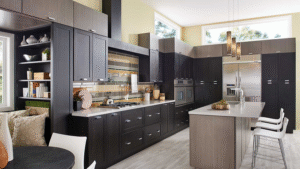Commercial Refrigeration Equipment: A Comprehensive Guide

Image Source: www.canadafoodequipment.com
Introduction to Commercial Refrigeration
Commercial refrigeration equipment plays a crucial role in the food service industry, ensuring that perishable products are kept at the right temperature to maintain their quality and safety. In this article, we’ll explore various types of commercial refrigeration equipment, factors to consider when choosing the right equipment, and the importance of proper maintenance.
Types of Commercial Refrigeration Equipment
There is a wide array of refrigeration equipment available to suit various business needs. Below are some of the most common types:
Walk-in Coolers and Freezers
Walk-in coolers and freezers are large, enclosed storage spaces that maintain consistent temperatures. They are ideal for storing large quantities of perishable items, such as meat, dairy, and produce. These units can be customized to fit the dimensions of your facility.
Reach-in Refrigerators and Freezers
Reach-in refrigerators and freezers are smaller, cabinet-style units designed for easy access to stored items. They are commonly found in commercial kitchens and come in various sizes and configurations, including single or multiple doors, and glass or solid doors.
Display Cases
Display cases showcase food and beverages in retail environments, such as grocery stores, delis, and bakeries. They maintain proper temperatures while providing an attractive presentation. Options include open-air cases, refrigerated merchandisers, and specialty cases for items like sushi and desserts.
Undercounter Refrigerators and Freezers
Undercounter units are designed to fit beneath countertops, maximizing space in small kitchens. They provide convenient access to frequently used items and are available in various sizes and styles.
Prep Tables
Prep tables combine refrigerated storage with a workspace, making them perfect for sandwich shops, pizzerias, and salad bars. They typically feature a refrigerated base with drawers or doors and a countertop for food preparation.
Bar Refrigeration
Bar refrigeration includes specialized equipment like bottle coolers, keg coolers, and wine refrigerators. These units keep beverages chilled and ready to serve in bars, pubs, and restaurants.
Ice Machines
Ice machines are essential for food service businesses, producing ice for drinks, food displays, and cooling purposes. They come in various types, sizes, and production capacities.
Factors to Consider When Choosing Refrigeration Equipment
When selecting commercial refrigeration equipment, consider the following factors:
Size and Space
Choose equipment that fits the available space in your facility without obstructing workflow or access. Consider the door opening direction and ventilation requirements.
Energy Efficiency
Energy-efficient equipment can save you money on utility bills and reduce your environmental impact. Look for ENERGY STAR® certified models and consider factors like insulation, door seals, and temperature controls.
Maintenance and Reliability
Choose equipment from reputable manufacturers with a track record of reliability. Regular maintenance and cleaning are essential for prolonging the life of your equipment, so consider ease of access to components and the availability of service technicians in your area.
Features and Customization
Consider the specific needs of your business and select equipment with appropriate features, such as adjustable shelves, LED lighting, or temperature alarms. Customization options, like specialized shelving and finishes, can also enhance your operation.
Importance of Proper Maintenance
Proper maintenance of commercial refrigeration equipment is crucial for ensuring food safety, prolonging the life of your equipment, and minimizing downtime. Regular cleaning, temperature monitoring, and servicing can help prevent breakdowns and costly repairs.
Conclusion
Commercial refrigeration equipment is an essential component of the food service industry, keeping perishable items at the correct temperature to ensure quality and safety. By understanding the different types of equipment available, considering factors like size, energy efficiency, and maintenance, and ensuring proper upkeep, you can make informed decisions for your business and keep your operation running smoothly.








